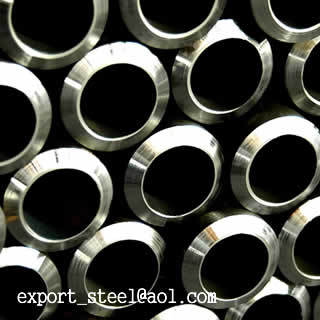Line Pipe for Sour Service - API Specificaton & Trade Terms
| Model | API |
|---|
| Place Of Origin | China |
|---|
| Price Term | EX-Work |
|---|
| Payment Term | T/T |
|---|
The line pipes can be used for a wide range of petrol and gas transportation under sour service environment.
Standards:
GB/T9711.3
API5l/ISO3183-2007
Application:
For petrol and gas transportation under sour service environment.
Sizes range
1/4 inch Nominal to 24 inchO.D.
Wall Thickness-Schedule 10 through XXH
Line Pipe Steels Used in Sour Service
Line pipe steels used in sour service are prone to hydrogen-induced cracking (HIC) depending on metallurgical and environmental factors.
The metallurgical factors consist of alloying elements, microstructure, strength, segregation, and shape of non-metallic inclusions. Some environmental factors which influence HIC, also known as stepwise cracking (SWC), are the partial pressures of hydrogen sulfide (H2S) and carbon dioxide, temperature, pH of the medium, and aggressive ions, such as chloride. Many failures of sour gas line pipes have occurred around the world as a result of HIC.
Considerable effort has been expended by steel line pipe producers, users, and research organizations to understand the HIC mechanism, to develop a laboratory test method to identify and quantify material susceptibility to HIC, and to produce steels with greater HIC resistance. NACE International has developed a standard test, TM-02-84, for line pipe steels.
The method describes procedures for evaluating the resistance of pipeline steels to SWC induced by H absorption from aqueous sulfide corrosion. The test is applicable to line pipe with wall thicknesses of 5 mm to 30 mm. The procedure consists of exposing unstressed coupons to synthetic seawater saturated with H2S at ambient temperature and pressure at a pH in the range 4.8 to 5.4 for 96 h. The samples are sectioned, polished metallographically, and etched, if necessary, so that cracks can be distinguished from small inclusions, laminations, scratches, or discontinuities. Crack sensitivity ratio (CSR), crack length ratio (CLR), and crack thickness ratio (CTR) are calculated for each section. The average is determined for each coupon. In recent work by Canada’s Centre for Mineral and Energy
Technology in collaboration with the Canadian Standards Association (CSA) Sour Service Task Force, two parameters were determined experimentally for each of 19 line pipe steels:
(1) threshold H concentration (CthH) or the concentration of diffusible H in the steel above which cracking occurs and
(2) threshold pH (pHth) or the pH below which cracking occurs.
